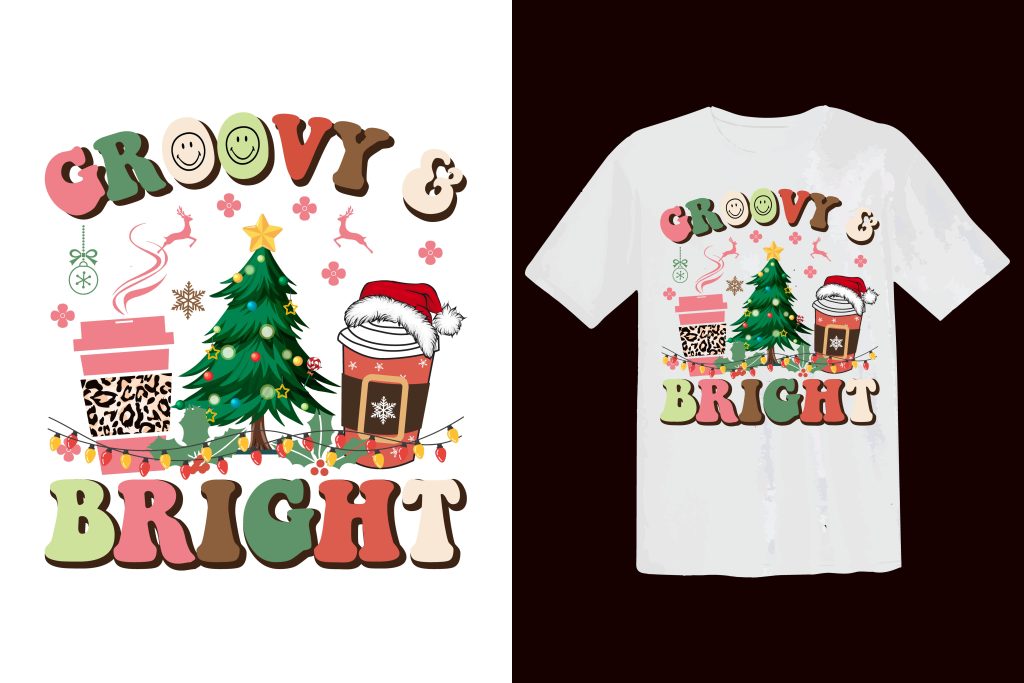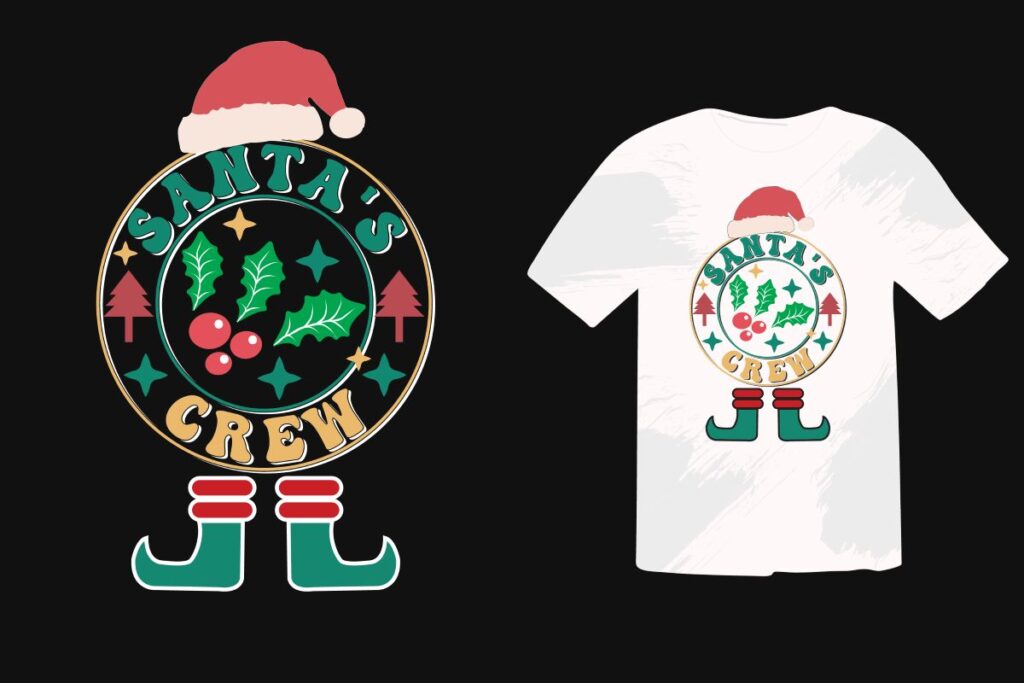DTF transfers have quickly emerged as a game-changer in the realm of custom apparel printing, captivating both entrepreneurs and craft enthusiasts alike with their affordability and efficiency. By utilizing the DTF printing process, creators can achieve stunning, high-resolution designs that seamlessly bond to a variety of fabrics. Unlike traditional heat transfer printing methods, DTF transfers eliminate the burden of screen setups, making it an accessible option for small businesses looking to produce personalized apparel quickly. The advantages of DTF printing extend beyond just convenience; vibrant colors and exceptional durability promise a professional finish that can withstand the test of time and washing. As you embark on your journey into the world of DTF transfers, prepare to unlock new creative possibilities in the custom apparel industry.
Also known as Direct-to-Film transfers, this innovative technique represents the future of garment printing. DTF technology allows for remarkable design versatility, catering to diverse fabric types without the need for extensive setup timings typical in traditional printing processes. By employing a specialized printing technique that balances quality and cost-effectiveness, custom designs can bloom on t-shirts, hoodies, and more. This method simplifies the printing process while delivering on-demand, high-quality results that appeal to the growing niche of personalized fashion. In exploring these advanced printing solutions, you’re diving into a transformative experience that enriches your creative endeavors and professional offerings.
Understanding DTF Transfers: The Foundation of Custom Apparel Printing
DTF transfers, or Direct-to-Film transfers, represent a significant technological advancement in the realm of custom apparel printing. This innovative printing method involves the application of vibrant inks onto a specialized film, which can then be effortlessly transferred onto a variety of fabrics using heat. One of the key aspects that makes DTF printing stand out is its ability to produce intricate designs with stunning color accuracy, making it an optimal choice for designers and small businesses alike. With the right equipment, nearly any design can be replicated on fabrics ranging from cotton to polyester.
Unlike traditional methods like screen printing, which often require multiple steps and considerations for different colors, DTF transfers streamline the process into a single application. This reduces both the time and cost associated with producing custom designs. It’s particularly appealing for small-scale businesses and hobbyists who desire high-quality prints without the overhead costs of larger operation setups. The ease of use and efficiency of DTF printing signal an evolving trend in the fashion industry towards more sustainable and user-friendly options.
The DTF Printing Process: A Step-by-Step Guide
Understanding the DTF printing process is essential for anyone looking to venture into custom apparel printing. The first step involves utilizing a DTF printer equipped with water-based inks designed specifically for this method. This printer models the desired artwork onto DTF transfer film, which is coated with a special adhesive. After printing, the film is sprinkled with adhesive powder—a crucial step that enhances the bond between the ink and fabric when heat is applied.
Once the preparation is complete, the next stage involves using a heat press machine to transfer the design from the film onto the chosen fabric. The heat and pressure work together to activate the adhesive, ensuring a durable and lasting print. By mastering this process, beginners can easily create high-quality, customized apparel. As practitioners become more experienced, they can explore innovative designs and techniques to enhance their offerings in the competitive custom apparel market.
Benefits of DTF Transfers: Why Choose This Printing Method?
One of the most compelling reasons to opt for DTF transfers in custom apparel printing is the cost-effectiveness of the method, especially appealing for those on a budget. DTF printing allows users to create beautiful designs in low to medium volumes without committing to large-scale production. This flexibility makes DTF an excellent choice for both small businesses and individuals looking to personalize items without the financial burden associated with traditional printing methods.
Additionally, DTF transfers boast remarkable versatility, making them suitable for various fabrics including cotton, blends, and even dark textiles. This adaptability expands the creative possibilities for designers, allowing them to cater to a wider audience looking for customizable apparel options. Furthermore, the quality of prints produced through DTF is incredibly high, with wash and durability ratings that exceed many traditional printing methods, providing long-lasting results that satisfy both the maker and the end consumer.
Getting Started with DTF Printing: Essential Equipment to Consider
To kickstart your journey in DTF printing, selecting the right equipment is paramount. Choosing a reliable DTF printer is your first step, ideally one that accommodates the needs of your business or hobby without overwhelming your budget. Brands like Epson and Brother offer a variety of printers that are well-equipped for this purpose. Alongside a suitable printer, investing in a quality heat press machine is crucial as it will be the device through which the actual transfers take place.
Another essential item is the DTF transfer film itself, which plays a pivotal role in the print quality. To enhance the longevity of your designs, the right adhesive powder must also be considered. Popular starter kits are available from many suppliers, often including a printer, heat press, and necessary materials, streamlining the entry into the DTF printing world. By assembling quality equipment at the outset, beginners can set a solid foundation for their custom printing endeavors.
Overcoming Challenges in the DTF Printing Process
While DTF printing is generally user-friendly, beginners may face challenges, particularly with achieving color consistency in their prints. This requires careful attention to your printer settings and the calibration of color profiles to ensure that the designs printed lean towards accuracy. If adjustments aren’t made, discrepancies can occur between the anticipated colors and the final printed result, leading to potential dissatisfaction with the outcome.
Another challenge relates to the application of adhesive powder. Striking the right balance is key—too much adhesive can lead to a heavy transfer that lacks flexibility, while too little can result in inadequate adhesion to the fabric. Experimenting with different amounts will help you find the sweet spot that works with your specific projects. Over time and with practice, these challenges become easier to navigate, allowing for enhanced creativity and output in your DTF printing.
The Future of DTF Printing: Trends and Innovations
As DTF printing technology evolves, several noteworthy trends are emerging that highlight its growing significance in the custom apparel space. One such trend is the rising popularity of eco-friendly inks that cater to environmentally-conscious consumers. The shift towards sustainable practices is vital in the printing industry as consumers increasingly prioritize brands that align with their values, making DTF a suitable choice for eco-friendly printing.
Moreover, the demand for personalization continues to surge, driving interest in DTF transfers as the go-to method for various custom designs. Whether for individual consumers or small businesses, DTF printing allows for the creation of unique, bespoke items that address the market’s desire for distinctiveness. As innovations in the technology continue to unfold, including advancements in printing speed and quality, DTF printing is set to solidify its position as a staple in custom apparel printing.
Frequently Asked Questions
What are DTF transfers and how do they work?
DTF transfers, or Direct-to-Film transfers, are a modern printing method where images are printed directly onto a special film. These designs are then heat transferred onto fabrics, allowing for vivid colors and intricate patterns. The process utilizes water-based inks, adhesive powder, and a heat press machine to ensure strong adhesion and durability.
What are the advantages of using DTF printing for custom apparel?
DTF printing offers several advantages for custom apparel, including cost-effectiveness for small runs, versatility across various fabric types, and high-quality prints that are durable and wash-resistant. This makes it ideal for small businesses and hobbyists looking to create unique, personalized designs.
What equipment do I need to start with DTF transfers?
To get started with DTF transfers, you’ll need a reliable DTF printer, a heat press machine, and special DTF transfer film along with adhesive powder. Many suppliers offer starter kits that include all essential equipment to help you launch your custom apparel printing journey.
How does the DTF printing process differ from traditional heat transfer printing?
The DTF printing process differs from traditional heat transfer printing by eliminating the need for multiple screens for different colors. Instead, DTF allows for printing on a single film which provides vibrant, detailed designs while reducing setup time and costs, making it more efficient for custom orders.
Can I use DTF transfers on various types of fabric?
Yes, one of the significant benefits of DTF transfers is their versatility. They can be applied to a wide range of fabric types, including cotton, polyester, and blends, making them a popular choice for t-shirts, hoodies, and other apparel items.
What challenges might I face when using DTF printing as a beginner?
Beginner challenges in DTF printing may include achieving color consistency and mastering the application of adhesive powder. Maintaining accurate printer settings and practicing the right amount of adhesive is crucial for producing high-quality transfers, but with experience, these challenges can be easily managed.
| Key Point | Description |
|---|---|
| What are DTF Transfers? | A printing method where images are printed on a special film and transferred to fabric using heat. |
| Advantages of DTF Transfers | Cost-effective, versatile for various fabrics, high-quality, durable prints. |
| Getting Started | Choose reliable equipment, utilize online resources, and practice to improve skills. |
| Challenges in DTF Printing | Color consistency and adhesive application can pose some initial difficulties for beginners. |
| Recent Trends | Growing demand for eco-friendly inks and personalized designs fuels DTF market growth. |
Summary
DTF transfers have emerged as a vital innovation in the custom apparel industry, offering an efficient, accessible way for creators and small business owners to produce high-quality prints. By understanding the technology and utilizing appropriate resources, beginners can confidently enter the exciting world of DTF transfers, unleashing their creativity while keeping up with emerging trends in personalization and sustainability. These components make DTF transfers not just a practical choice, but also a gateway for expression in the fashion landscape.


